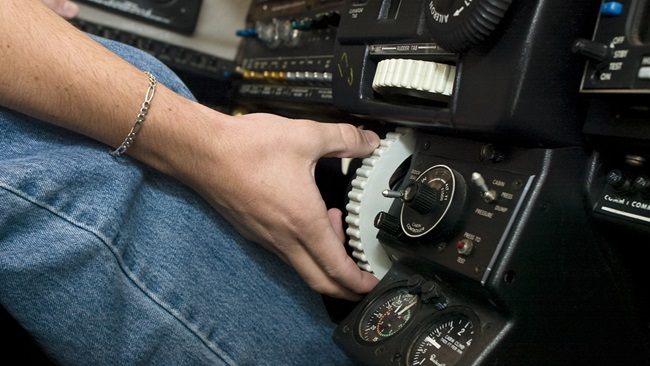Efficiency: Loud and not proud
Efficiency: Loud and not proud
I recently attached video cameras to a Cessna 180 Skywagon equipped with a large-diameter “seaplane prop” set to maximum rpm and recorded both its performance and decibel level. With the propeller knob full forward and wide-open throttle, the Skywagon’s takeoff roll was 620 feet and lasted 14 seconds. Once established in a 75-knot climb, it ascended at 1,100 feet per minute, took 1 minute 50 seconds to go from brake release to 1,000 feet agl—and the sound beside the runway was a screaming 98 decibels. Then, at pattern altitude, the pilot reduced engine/prop rpm to 2,500 as per the pilot’s operating handbook.
But what would happen if the pilot set 2,500 rpm on the ground and then went to full throttle for takeoff? Would performance suffer?
On the next two takeoffs, the pilot did just that—and his takeoff roll was 20 feet shorter and three seconds quicker, his rate of climb was 150 feet per minute higher, and time from brake release to 1,000 feet agl was reduced by more than 20 seconds.
Oh, yeah, and the noise near the runway dropped 10 decibels.
The mind-numbing, ear-splitting jackhammer noise of propeller tips hitting the speed of sound is really the mark of inefficiency, wasted effort, and a needless loss of aircraft performance.Klaus Savier, founder of Lightspeed Engineering and designer of multiple aircraft speed modifications, said all airfoils—including propellers—see a sharp increase in drag as they approach the speed of sound.
“The drag rise on propeller tips starts at about 0.84 Mach and goes up sharply from there,” he said. “The loss of efficiency is dramatic.”
Engine horsepower increases with rpm, but as propeller tips approach the speed of sound, the amount of thrust they produce drops off rapidly.
“It doesn’t do any good to add horsepower if you’re losing propeller efficiency as a result,” he said. “That’s a losing proposition.” Large-diameter, two-blade propellers on direct-drive engines are the most susceptible to high tip speeds. Think Cessna 180s and 185s, T–6s, and old Beechcraft Bonanzas.
Reducing rpm at high power settings can have negative consequences, even in normally aspirated engines. In extreme cases, high manifold pressure and low rpm can cause detonation or preignition that could damage or destroy engines. Check with your engine manufacturer to find out whether your airplane’s engine is capable of safely operating at less than full rpm.
If so, you may find that flying quieter brings better performance, too.
Email [email protected]
Web: aopa.org/pilot/loudnotproud



